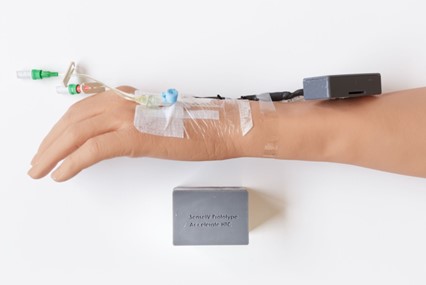Developing a prototype peripheral intravenous therapy monitoring device
SenseIV is a multidisciplinary team developing wearable technology for healthcare to empower patients and staff in the use of peripheral intravenous therapy.
The existing devices are fitted to patients of all types, from newborn to the elderly, to deliver intravenous fluids ranging from relatively harmless saline solutions through to the most potentially toxic chemotherapy drugs.
SenseIV in collaboration with HTC set about developing a prototype peripheral intravenous therapy monitoring device.
PERIPHERAL INTRAVENOUS CANNULAS (PIVC)
Complications arising from incorrect placement of peripheral intravenous cannulas (PIVC) can cost the NHS upwards of £4,000 - £16,000 per patient because of infections. Infection is just one of the several adverse events which includes skin irritation, swelling, skin burns, amputation or greater harm. Which could affect up to 40% of the 20 million patients fitted with PIVC in the UK each year.
Intravenous cannulation is a technique in which a cannula is placed inside a vein to provide venous access. Venous access allows the administration of fluids, medications, parenteral nutrition, chemotherapy, and blood products.
A cannula is a small flexible plastic tube inserted into a vein. The cannula is used to administer medication or fluids that patients are unable to take by mouth or that need to enter your bloodstream directly.
Whilst PIVC cannulation is a standard and widely used practice, it is under-quantified and can come with complications including infection. Careful adherence to guidelines and procedures can minimise these risks. There are visual scoring schemes for nurses to follow, VIP scoring system, but this is generally not adhered to and can be done poorly. As this is also a manual visual check it can be very subjective and does not notably impact on the number of patients’ adverse events.
HTC carried out the work identifying suitable components, designing the case and electronics scheme, and coding the microcontroller. The aim of the project was to develop and validate a working lab prototype for evaluation by SenseIV’s team.
SenseIV stated:
“HTC were excellent, we worked with Rhodri who did a great job of understanding the ask and collaborating throughout. I hope we get to work together again in the future”.
www.senseiv.com

